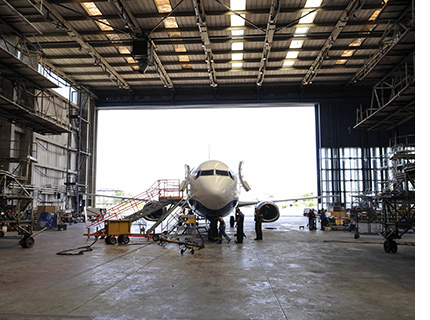Organized by Joy Wu, WWS editor
On October 1st, there was an interesting requirement set by ANA air, to request all passengers to “spend a penny” before they board the plane. Even though this requirement only set in for a short time and was canceled soon afterwards, it fully presented the needs for reducing weight in aviation services. When the weight on an aircraft is decreased, more gasoline is saved and the CO2 emission level is lowered. In a study on global warming it also shows that, if the temperature continues to increase, it will thin out the air density and may result in high difficulty for aircraft to lift up into the air. Therefore, reducing weight has become one of the biggest tasks for aerospace builders, which has also lead to the thriving moments where more composites materials are applied to aircraft.

The composite materials are capable of providing similar rigidity to metal but weighing much less than metal. Another interesting fact about composite materials has to do with its high changeability, by joining with different additives, it shows entirely different features and usage. This also opens up different opportunities for using composite materials.
On May 29th, the United Aircraft Corporation (UAC) introduced a new commercial jet test flight, which signified another new milestone for composite applications in the aviation industry. On UAC’s Irkut MC-21 commercial jet, not just its wings were the first to be made entirely through Out Of Autoclave (OOA) processing, but over 40%-45% of the jet is built with using composite materials. Compared to the A320 Airbus plane, the Irkut MC-21 is 15% less on structural weight and marks a 20% reduction for operating cost and a 15% reduction for gasoline usage.

In August, 2017, a material engineering team lead by Professor Wang Hao-Wei at Shanghai Jiao Tong University discovered a whole new material, the nano aluminum-clay alloy. This new material not only weighs much less but it also produces stronger strength and rigidity than titanium. Currently, this new aluminum-clay alloy has already been used for making new pistons in internal combustion engines as well as other critical components in the automotive industry. It is expected to help new vehicles reduce their weight by even more, enhance functional safety, and reduce the CO2 emission.
While there is some new progress seen in Russia and China, there is even more new developments around the world for composite materials. The composite materials are now being viewed as one of the most important materials holding new potential for making better products with higher performance.